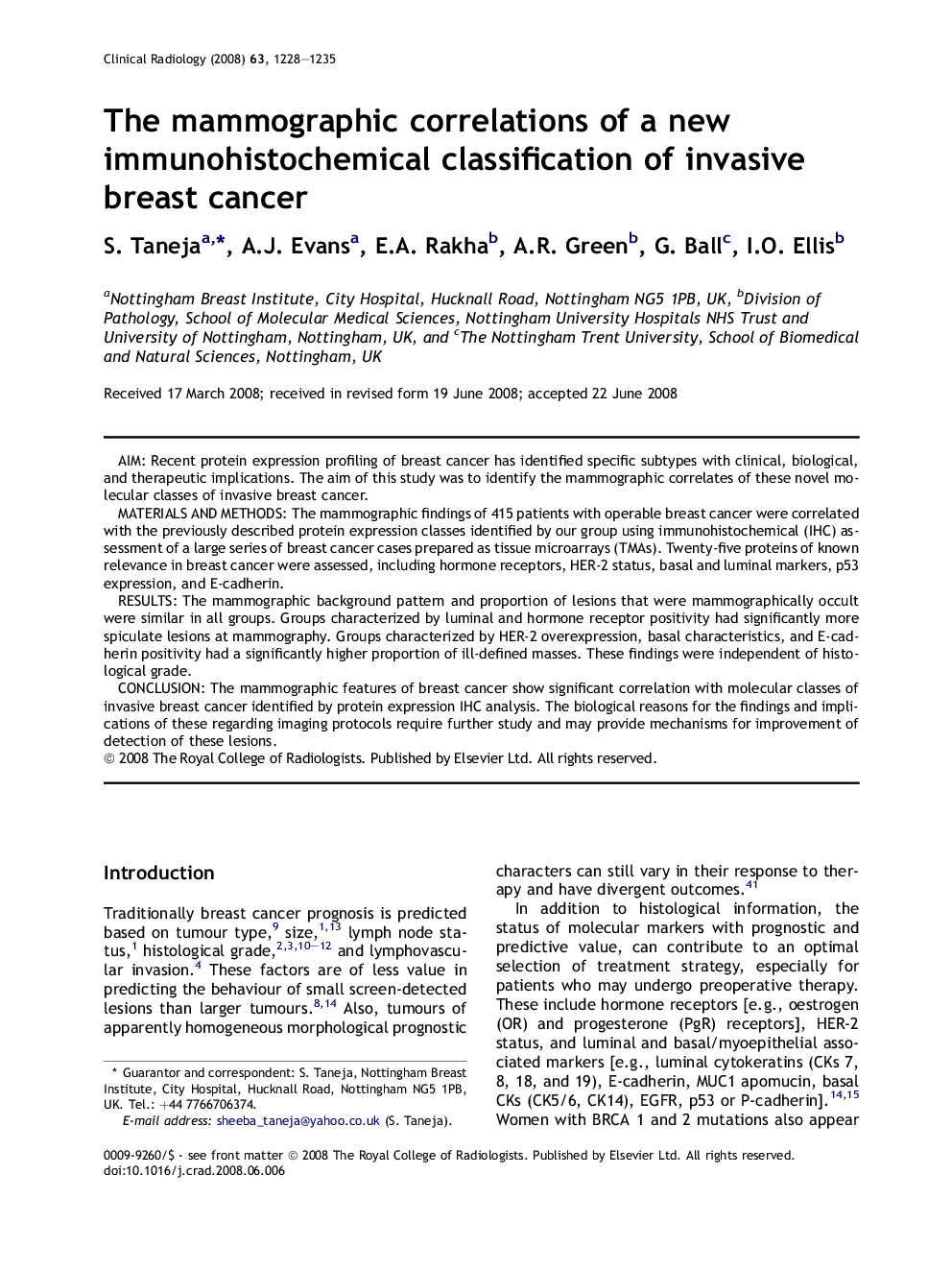| Article ID | Journal | Published Year | Pages | File Type |
|---|---|---|---|---|
| 3983125 | Clinical Radiology | 2008 | 8 Pages |
AimRecent protein expression profiling of breast cancer has identified specific subtypes with clinical, biological, and therapeutic implications. The aim of this study was to identify the mammographic correlates of these novel molecular classes of invasive breast cancer.Materials and methodsThe mammographic findings of 415 patients with operable breast cancer were correlated with the previously described protein expression classes identified by our group using immunohistochemical (IHC) assessment of a large series of breast cancer cases prepared as tissue microarrays (TMAs). Twenty-five proteins of known relevance in breast cancer were assessed, including hormone receptors, HER-2 status, basal and luminal markers, p53 expression, and E-cadherin.ResultsThe mammographic background pattern and proportion of lesions that were mammographically occult were similar in all groups. Groups characterized by luminal and hormone receptor positivity had significantly more spiculate lesions at mammography. Groups characterized by HER-2 overexpression, basal characteristics, and E-cadherin positivity had a significantly higher proportion of ill-defined masses. These findings were independent of histological grade.ConclusionThe mammographic features of breast cancer show significant correlation with molecular classes of invasive breast cancer identified by protein expression IHC analysis. The biological reasons for the findings and implications of these regarding imaging protocols require further study and may provide mechanisms for improvement of detection of these lesions.
